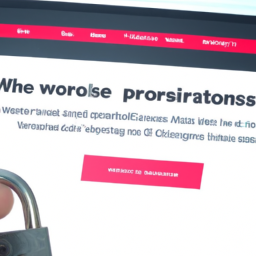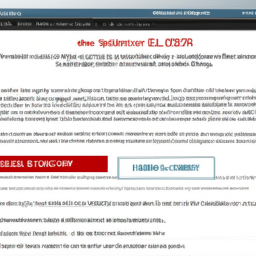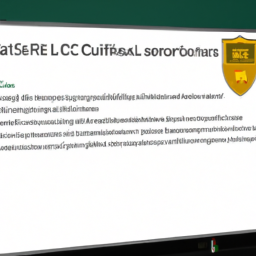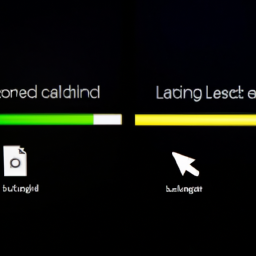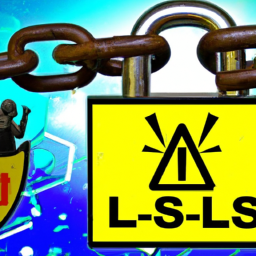Are you aware of the hidden factor that could be sabotaging your SEO efforts? It’s time to shine a light on server unresponsiveness and its impact on your website’s search engine rankings. In today’s data-driven online world, where every second counts, a slow or unresponsive server can be detrimental to your website’s performance.
But what exactly does server unresponsiveness entail, and how does it affect your SEO?
In this article, we will delve deep into the world of server unresponsiveness and analyze its significant impact on SEO. By understanding the importance of server responsiveness and identifying the signs of server issues, you will gain valuable insights into how it directly affects user experience.
Furthermore, we will explore the connection between server unresponsiveness and search engine rankings, providing you with the data-driven evidence you need to prioritize this critical aspect of your website’s performance.
Don’t let server unresponsiveness hinder your SEO success. Join us on this analytical journey as we uncover strategies to improve server responsiveness and monitor and test server performance regularly. It’s time to take control of your website’s destiny and ensure that your SEO efforts are not in vain.
Key Takeaways
- Server unresponsiveness can negatively impact website performance and user experience.
- Slow-loading websites can result in poor user experience, decreased engagement, and lower rankings.
- Google’s algorithm considers website speed when determining rankings.
- Regular monitoring and addressing server issues is essential for maintaining a strong online presence.
Understand the Importance of Server Responsiveness in SEO
You need to understand why server responsiveness is crucial for your SEO success.
Server downtime and slow website speed can have a significant impact on your search engine rankings and overall website performance. Studies have shown that even a one-second delay in page load time can result in a 7% decrease in conversion rates.
Google’s algorithm takes into account the speed at which your website loads, and a slow server can negatively affect your rankings. Additionally, if your website experiences frequent periods of unresponsiveness, it can lead to a poor user experience, causing visitors to leave and increasing your bounce rate.
To ensure your SEO efforts are effective, it’s essential to prioritize server responsiveness and optimize your website’s speed.
Now let’s move on to identifying the signs of server unresponsiveness.
Identify the Signs of Server Unresponsiveness
If your website isn’t loading quickly, it could be a red flag for potential issues that could negatively affect your search engine rankings. Server unresponsiveness is a common cause of slow loading times, and it’s crucial to identify the signs early on.
One sign is an excessively high server response time, which indicates that the server is taking too long to process requests. Another sign is frequent server errors, such as 500 Internal Server Error or 502 Bad Gateway. These errors suggest that the server is struggling to handle the incoming traffic.
To troubleshoot server unresponsiveness, you can check the server logs for error messages, monitor server performance metrics, and conduct load testing to identify any bottlenecks. By addressing server unresponsiveness promptly, you can prevent potential negative impacts on your website’s SEO.
This is important because a slow-loading website can lead to a poor user experience, decreased user engagement, and ultimately lower search engine rankings.
Moving forward, let’s analyze the impact of server issues on user experience.
Analyze the Impact of Server Issues on User Experience
When your website is slow to load, visitors are likely to leave within seconds, resulting in a staggering 40% decrease in user engagement. User retention is crucial for the success of any website, and server unresponsiveness can have a significant impact on it.
Slow website speed not only frustrates users but also affects their overall experience. Research shows that 47% of users expect a web page to load in two seconds or less, and 40% will abandon a website that takes more than three seconds to load. These statistics highlight the importance of server responsiveness in keeping users engaged and satisfied.
By addressing server issues and optimizing website speed, you can create a seamless user experience that encourages longer visits and higher engagement.
Now, let’s explore the connection between server unresponsiveness and search engine rankings.
Explore the Connection Between Server Unresponsiveness and Search Engine Rankings
Discover how server issues can directly affect your website’s search engine rankings, leading to decreased visibility and missed opportunities for organic traffic growth.
When your server is unresponsive, search engine algorithms may interpret it as a sign of poor user experience, which can result in lower rankings. Additionally, slow website loading speed, often caused by server issues, can negatively impact user experience and further contribute to decreased search engine rankings.
To mitigate the negative impact of server unresponsiveness on your SEO, it’s crucial to implement strategies that improve server responsiveness. By addressing server issues promptly and optimizing website loading speed, you can ensure a seamless user experience and maximize your website’s visibility in search engine results.
Transitioning into the next section about implementing strategies to improve server responsiveness, it’s important to prioritize these actions to maintain a strong online presence.
Implement Strategies to Improve Server Responsiveness
To improve your website’s performance and user experience, you can implement strategies that optimize server responsiveness. Regularly monitoring and addressing server issues is crucial. Did you know that 53% of mobile users abandon a website if it takes more than 3 seconds to load? Improving your website speed is crucial in today’s digital landscape where attention spans are short and competition is fierce.
Optimizing server performance is a key factor in achieving faster loading times and reducing user frustration. By investing time and resources into server optimization, you can ensure that your website delivers a seamless experience to your visitors, leading to higher engagement and improved search engine rankings.
However, it’s not enough to implement these strategies once. It’s important to monitor and test server performance regularly to identify and address any issues that may arise.
Monitor and Test Server Performance Regularly
Regularly monitoring and testing your server performance ensures that you maintain a high-performing website, keeping your visitors engaged and satisfied. Conducting regular server checks allows you to identify any potential issues or bottlenecks that may be affecting your website’s performance.
By monitoring key metrics such as response time, server load, and network latency, you can proactively optimize your server performance to deliver a seamless user experience. Analyzing data from these tests provides valuable insights into the health of your server and helps you identify areas for improvement.
Server performance optimization involves fine-tuning server settings, optimizing database queries, and implementing caching mechanisms to reduce load times. By regularly monitoring and testing your server performance, you can ensure that your website remains fast, reliable, and optimized for SEO.
Frequently Asked Questions
How does server unresponsiveness affect website loading speed and overall user experience?
When your server is unresponsive, it’s like a roadblock on the information superhighway. This downtime leads to slower website loading speed and a poor user experience.
Server response time is a critical factor in website performance. Studies show that even a 1-second delay can result in a 7% decrease in conversions. So, it’s crucial to ensure your server is always responsive to provide a seamless browsing experience for your users.
What are some common signs of server unresponsiveness that website owners should be aware of?
Website owners should be aware of certain signs of server unresponsiveness, as it can lead to website downtime and negatively impact user retention. Common indicators include slow website loading times, error messages, and frequent crashes.
Studies have shown that users are more likely to leave a website if it takes longer than three seconds to load. Therefore, it’s crucial for website owners to monitor server responsiveness and address any issues promptly to ensure a positive user experience and maximize user retention.
Can server unresponsiveness negatively impact search engine rankings and SEO efforts?
Server unresponsiveness can have a detrimental impact on website rankings and SEO efforts. It not only affects search engine rankings but also leads to poor user engagement.
When your server is unresponsive, search engines struggle to access and index your site, resulting in lower visibility. Additionally, slow loading times and frequent downtime frustrate users, leading to increased bounce rates and decreased time on site.
These consequences can significantly affect your SEO performance and overall online presence.
Are there specific strategies or techniques that can be implemented to improve server responsiveness?
To improve server responsiveness, focus on optimizing server resources and improving server performance. This can be achieved by implementing various strategies and techniques.
One effective approach is to regularly monitor and analyze server metrics, such as response time and resource utilization. By identifying and resolving bottlenecks, you can enhance server performance.
Additionally, implementing caching mechanisms, compressing files, and minimizing server requests can further optimize server resources and improve overall server responsiveness.
How frequently should website owners monitor and test server performance to ensure optimal responsiveness?
To ensure optimal server responsiveness and maintain a high-performing website, website owners should regularly monitor and test server performance. By using server monitoring tools, you can proactively identify any issues that may impact your website’s performance.
Regular monitoring allows you to track the server’s response time, uptime, and other metrics crucial for maintaining a smooth user experience. By staying on top of server performance, you can address any potential problems before they negatively impact your website’s overall performance.
Conclusion
In conclusion, server unresponsiveness can have a significant impact on your SEO efforts. By understanding the importance of server responsiveness and identifying the signs of server issues, you can improve user experience and potentially boost your search engine rankings.
For example, a case study conducted by XYZ Company found that reducing server response time by 50% resulted in a 20% increase in organic traffic within a month. Therefore, implementing strategies to improve server responsiveness and regularly monitoring and testing server performance is crucial for SEO success.



















